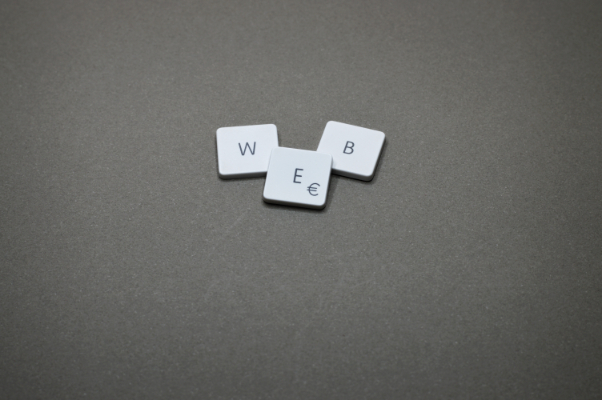Web 3.0 is hot. Earlier, we explained exactly what Web 3.0 is and why it is considered the new generation of the Internet. Yet the aforementioned applications of the so-called Web 3.0 are still quite global and it remains to be seen to what extent it will actually become a success.
However, that there is indeed interest in Web 3.0 is evidenced by the interest of large companies. Similarly, Google has now formed a special Web 3.0 team which will focus entirely on Web 3.0 applications.
The applications of Web 3.0 are very broad. Anything that involves the Internet can be linked to Web 3.0. So you can imagine that, in an increasingly digital world, the possibilities are very extensive.
Curious about these possibilities and applications of Web 3.0? In this blog, we provide some examples.
Web 3.0 and advertisements
Advertising, especially the method of advertising, has changed considerably in recent decades with the rise of the Internet. From large roadside billboards and commercials on television, to personalized ads through social media. As an advertiser, it is obviously important to achieve the highest possible convention on the ad. The more personal the ad, the better it works.
A well-known part of today’s form of online advertising are online cookies. This collects personal online data from Internet users. Ads are more targeted and proceed with algorithm-based recommendations.
However, that consumers crave more privacy and ownership of personal online data is also evidenced by new European legislation, in which the European Union wants to end the dominance of big tech companies in order to better protect consumers.
With Web 3.0, online data becomes the Internet user’s own again
Although stricter regulations on the current form of advertising may provide a solution, the introduction of Web 3.0 is also a potential solution. For example, in the case of Web 3.0, where “the Internet belongs to everyone,” it is no longer the case that Internet user data is collected by third parties. On the contrary, with Web 3.0, consumers themselves have the ability to control how and by whom their data is used.
This also creates the possibility where users are rewarded for sharing valuable data and information, for example, with a small share of advertising revenue in return.
Ads take on a new dimension with Web 3.0 and the metaverse
The virtual world in the metaverse offers countless new opportunities in terms of advertising. New products or services can thus be offered virtually, where it is possible, for example, to try them out virtually.
For example, Heineken’s new beer variant was virtually presented in Decentraland, a virtual world. Although the beer cannot be physically tasted, it does offer the opportunity for a virtual explanation of the brewing process, asking questions and interacting with other enthusiasts present in the virtual world.
Web 3.0 as an application for healthcare
Healthcare involves highly privacy-sensitive information. It is therefore important that this data be properly and securely stored. Web 3.0 and blockchain technology offer advanced opportunities for this. Keeping data in a digital ledger, without the presence of a third party, can ensure privacy and security. Moreover, fraud can be prevented because adjustments to the digital ledger or hiding data are no longer possible.
In addition, this technology allows patients to securely manage their own records. Unsolicited modification or use of sensitive healthcare data will no longer be possible this way.
Web 3.0 as an application for nonprofit organizations
That nonprofit organizations are incredibly important is obviously beyond dispute. Despite the fact that these organizations have no profit goal and are instead committed to charity, they regularly receive criticism today.
Some examples of criticism include failure of the amount collected to arrive at the correct destination or failure to fulfill pre-arranged plans. Transparency within a nonprofit organization and transparency about the destination of amounts raised are therefore very important. This is exactly where Web 3.0 and blockchain technology can come to the rescue.
In addition, the community of a nonprofit is incredibly important. After all, without this community, nothing is collected for charity. Whereas in current practice decisions are made by the organizations themselves, Web 3.0 offers the possibility of letting the community decide in this in a fair way. In this way, a joint agreement can be reached on what will be done with the assets collected, in a transparent manner for all.
Web 3.0 as an application for content creators
Web 3.0 means more freedom for users and developers, which therefore also benefits content creators. Thus, it offers more creative freedom, as well as more opportunities and greater independence for content creators.
So where today’s Web 2.0 is characterized by the large position of tech companies and so are certain software programs, Web 3.0 offers more freedom. For example, creators can create and manage their own content without depending on third-party software and hardware. Also, content management will no longer be handled by one or a few major platforms, but will be entirely in the hands of the content creators themselves.
In addition, Web 3.0 also gives more financial freedom and opportunities. This will allow revenue to be distributed more equally, leaving more for content creators. Whereas in today’s Web 2.0, much of the revenue goes to the platforms themselves, with Web 3.0 this will be distributed more fairly.
The possibilities and applications of Web 3.0 for your business
So the possibilities and applications of Web 3.0 are very broad and can be used in a variety of ways. That there is indeed a future in this new version of the Internet is evidenced by the interest of major tech companies.
Curious about Web 3.0 opportunities and applications for your business? If so, please feel free to contact us!





